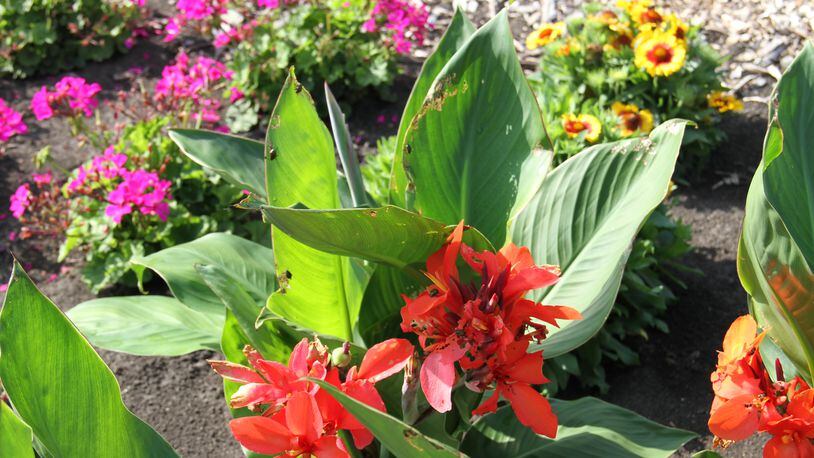As you have probably experienced, JB populations rise and fall. This is true with any insect populations. They have banner years and then something happens, and they drop off.
With JBs, if there is a dry August, at the time of adult egg-laying, the eggs don’t survive as easily. If it’s wet or you irrigate your lawn, populations are likely to survive. Predators might take care of populations in some years as well.
I’ll be honest, and I will probably kick myself for saying this, I haven’t seen huge populations of JBs in my area (northern Miami Valley) in several years. Many from the Beavercreek area have told me that they have had large populations recently.
If JBs are in your area, and if you have the right plants, they will make a visit. JBs have a specific but broad plant palette (approximately 300 species).
JB favorites include linden, apple and crabapple trees, purple leaf plum roses, hibiscus, sweet potato vine and grapes are like a juicy steak. Then there is a whole list of other plants that they will feed on when they come across them.
JBs are the adults of white grubs. The adults hatch now, lay eggs in August through September, hatch and do a little feeding in the fall, and overwinter as larvae.
There are a couple of misconceptions when it comes to JBs. One is that if you eliminate all the grubs in the lawn, you eliminate JBs. Not true.
You may eliminate grubs in your lawn (and possibly other good insects), but if you have the preferred plants they will come from neighbors and elsewhere.
Another one is that JB traps are useful in eliminating the beetles. This is debatable. Since the traps attract JBs to them, if you have them in lawn areas where you also have preferred plants, they still feed on the plants.
On the other hand, if you have small populations and can put the traps away from desired plants, you might knock down some of the population.
Some people find traps to be helpful in keeping populations low. However, if populations are high in your area, you will be dumping a lot of JBs out of the traps. I guess better the traps than on your plants, right?
Small populations can be managed by knocking the adults into a bucket of soapy water. Doing this daily (takes a lot of time) and when they are in the peak feeding frenzy (afternoon) may help some.
There are also pesticides that are effective while at the same time, safe to use. However, you must be careful not to use them when pollinators are out during the afternoon.
Credit: Contributed
Credit: Contributed
Drop me an email (bennett.27@osu.edu) and let me know what you are seeing in your area in regards to JB populations.
Pamela Corle-Bennett is the state master gardener volunteer coordinator and horticulture educator for Ohio State University Extension. Contact her by email at bennett.27@osu.edu.
About the Author
